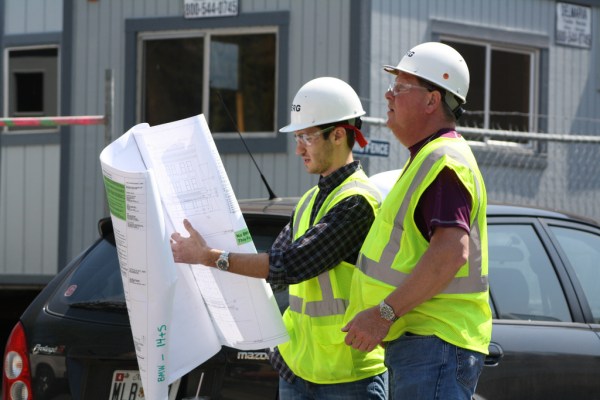Aaron Levie of Box recently shared his perspective on the trillion dollar market for enterprise startups building solutions to help individual workers, broad job functions and entire industries go digital. Aaron argues that
“…while information technology swept through most enterprises in the 90s and 2000s aiming to automate the back-office, this decade will be all about extending the front-office: how customers are discovered, interacted with, supported, and sold to; how companies can exchange and collaborate with their vendors and partners; how researchers make discoveries and propagate them throughout their organization; and how products are designed, launched, and marketed.”
As a VC working with the startups creating these innovations, I would argue that the far bigger opportunity is to address the field office and the deskless worker who operates there. The field office represents the people, processes and physical infrastructure that create value in a wide range of industries including manufacturing, farming, logistics, energy and retail – wherever physical goods and services are being created and delivered.
The deskless worker operates in a factory, on a farm, in a warehouse or on a construction site – places where people engage primarily with physical goods instead of a keyboard or phone.
In the 1990’s, the desktop computer, sometimes connected to Ethernet, took hold of the desk-based knowledge worker in the back office, and enterprises focused on centralization and productivity. In the early 2000’s laptops and mobile phones, connected to WiFi and cellular networks, pushed digitization into the front office, allowing knowledge workers to be productive from their car, a café or at the client’s office.
The next era is about digitizing the non-digital and achieving a deeper understanding of how the world around us impacts the enterprise.
Digitizing The Field Office
Thanks to three major technological advances – the Internet of Things (IoT), wearable computing and low-power connectivity – the next wave of enterprise innovators are poised to extend the enterprise’s digital reach far beyond the corporate back- and front-offices to the field office, where value is being generated by the creation and delivery of physical goods and services. Winners in this decade will be the companies that create the apps and infrastructure that connect the workers, smart spaces and smart machines far beyond your office window.
IoT has been the catalyst for the new opportunities that are now being created in the field office. Broadly defined, it’s a set of sensors of physical-world activity that stream data to the enterprise cloud. It allows operational processes that used to be invisible to now be measured and the accompanying data to be available immediately, anywhere. For example, FirstFuel is leveraging the hundreds of millions of smart energy meters that have been installed across North America and Europe to provide energy companies with detailed analytics of their commercial customers. This generates opportunities to send in teams to perform energy efficiency upgrades to the building, which is becoming the most important growth driver in this industry.
As the IoT takes hold, advances in mobile and wearable technologies are also connecting deskless workers in new ways. Wearable computers allow hands-free operations as well as provide and transmit real-time data on the factory floor, hospital floor or while repairing complex products in the field. Companies such as Wearable Intelligence and Augmedix provide solutions for different types of workers, ranging from oil rig engineers to emergency room doctors, enabling them to more reliably follow procedures, automate compliance recordkeeping and connect in real-time to remote specialists to solve problems more quickly.
Finally, low-power connectivity networks can tie all this data together and stream it back to one enterprise cloud. New distributed networks like Helium and Samsara will robustly move information between many different types of devices and also act as a gateway to the existing IT infrastructure.
The Trillion Dollar Benefit and Challenge
Successfully connecting deskless workers, the spaces they operate in and the physical (mostly analog) assets they use to the cloud as well as providing a real-time stream of data will enable several revolutionary advances. For the first time, an enterprise can see its business running in real-time, from the back office through the front office to the field office, all the way to the point of delivery to customers and even inside of the customer. This opens up the door for end-to-end analytics and business process optimization that has never been possible before.
Insights can immediately be pushed back down to the field to help workers do their jobs more efficiently, effectively and safely. The data exhaust will also enable real-time learning and adjustment for the enterprise in managing their portfolio of talent and physical assets, digitally. For example, Airware provides drone solutions that survey mining and quarry sites and can measure material movement from the air to optimize planning, while also tracking that everyone is wearing their hardhat.
Finally, the transformation of enterprise IT by connecting the non-digital infrastructure to the digital infrastructure will also recast the enterprise itself. In contrast to earlier eras, today’s startups will have to provide solutions that address not only the centralized enterprise or even the traditional white-collar mobile worker, but also integrate the deskless worker and physical assets into the digital ecosystem. To win, companies will need to solve problems at even greater scale and higher complexity than seen in the enterprise cloud today. New developer tools, data science platforms, and network management applications must be created to address the challenges unique to the field office and leverage the extreme velocity, volume and variety of data streams generated by the interactions between IoT and deskless workers.
It’s a daunting challenge, but entrepreneurs who can stand atop these technology advances and connect the field office to the enterprise cloud will be handsomely rewarded.
